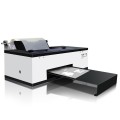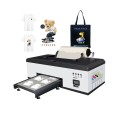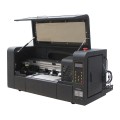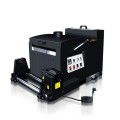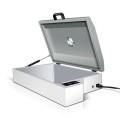The Impact of Tariffs on Cross-Border Purchases

The Impact of Tariffs on Cross-Border Purchases
Since taking office, President Trump proposed implementing tariffs on goods from various countries, including China, Canada, and Mexico, with rates varying from 10% to higher. Tariffs are often viewed as a tool to protect domestic industries, especially larger manufacturing sectors, from foreign competition.
However, a crucial question arises: who actually bears the cost of tariffs?
In most cases, it is the buyer who ends up paying. When a consumer purchases a product from another country, the goods are usually subject to customs duties once they arrive at the consumer's country's customs. Logistics companies typically handle the customs clearance on behalf of the buyer, and the local customs will issue a bill for the duties, which the consumer has to pay.
You might think that, to protect consumers' rights, tariffs should be paid by the seller. In some cases, sellers do import goods in bulk before they reach the consumer's country. For example, a Chinese seller may import a batch of goods into the U.S., paying the tariffs upfront. In this case, U.S. consumers won't see a separate tariff charge.
However, regardless of who initially pays the tariff, the seller will often pass on the cost to the consumer. For example, a product that originally costs $100 may cost $110 or more due to an added 10% tariff. The difference lies in who makes the payment to the customs authority.
How Tariffs Influence Consumer Behavior
The imposition of tariffs may prompt consumers to look for locally produced alternatives. If local products are available at a comparable price (or only slightly more expensive than imports), tariffs can encourage consumers to support domestic industries.
However, the effect of tariffs varies by product type. For example, simpler items like coffee mugs, which can be easily manufactured locally, may see an increase in local production over time. On the other hand, products with more complex components or manufacturing processes, such as consumer electronics or household appliances, may not be easily replicated locally, resulting in a higher demand for imported goods.
A good example of this is the Food Printer, a device used to print logos, text, and images on food items like coffee, beer, or cakes. While not an essential household item, it serves as a creative tool for restaurants to offer personalized food experiences for their customers.
Similarly, niche products like T-shirt printers are not common household or office equipment. Despite being categorized under the same tariff codes (starting with 8443), they are specialized products that are typically imported from other countries. If a country imposes high tariffs on these types of machines, consumers may face higher prices for these imported goods.
Understanding the Impact of Tariffs
We do not take a stance for or against tariffs, but it’s important for consumers to understand how tariffs affect pricing and availability. If you're wondering about the tariff rates for a specific product in your country, there is a useful tool you can use: Simply Duty. By entering the product's origin, destination country, price, and description, you can calculate the duties that will apply. The standard calculation term is CIF (Cost, Insurance, and Freight), which most customs authorities use to assess duties.
Learn more about Food Printers and how they can help your business!

